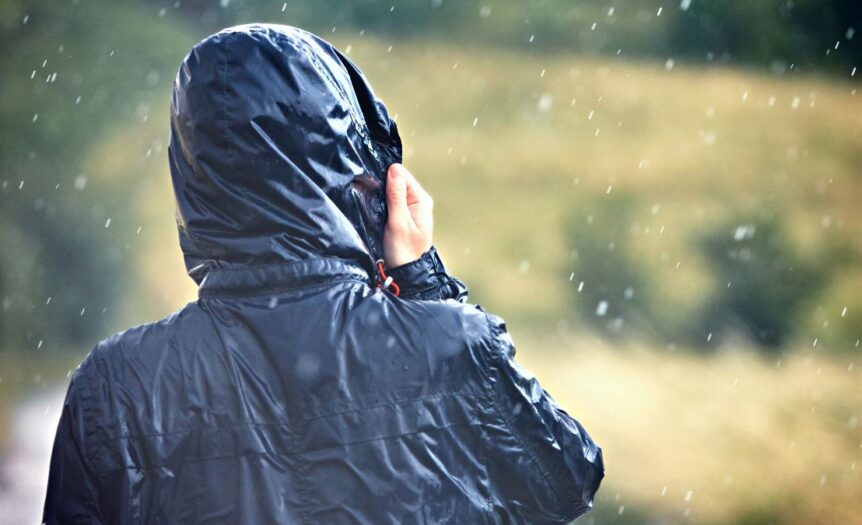Florida’s environment is quite dramatic. A typical day here can include a shower, intense heat, and anything in between. If you’re hoping to survive the Sunshine State’s climate, check out our list of the best clothing materials for wet weather conditions.
But First, the Worst Clothing Materials
Before diving into the best clothing materials for wet weather conditions, you must understand the least suitable fabrics available. Cotton is perhaps the worst clothing fabric for humid, moist climates. This material is exceptionally absorbent, leading to a wet and heavy garment on muggy days. Plus, cotton clothing stays damp for a long time, keeping you uncomfortable even when the weather turns positive.
Ideal Fabric I: Nylon
Nylon is a synthetic fabric that’s well-regarded for its superior durability and overall strength. More importantly, nylon fibers are incredibly water resistant. Most rain jackets and top layers consist of a nylon blend to ensure you stay dry while outdoors. It’s also a popular fabric option for workout clothing and activewear. However, nylon isn’t always dependable in extremely muggy weather – because of its natural waterproofing, sweat can get trapped on your body throughout the day, leaving you wet and uncomfortable.
Ideal Fabric II: Polyester
Polyester, like nylon, is a synthetic material with zero organic compounds. However, many polyester garments contain mixtures of other, sometimes organic fabrics. Polyester can effectively wick away moisture while absorbing some of your personal perspiration. It’s also an incredibly reliable material that can survive years of use and machine washing. Most importantly, it’s an ideal garment option for wet, slightly warmer days.
Ideal Fabric III: Silk
Silk is the ultimate garment fabric for Florida weather. Like nylon and polyester, silk naturally repeals water, keeping you comfortable and dry. However, unlike synthetic materials, silk doesn’t trap a tremendous amount of sweat on your body. Plus, silk is a premium fabric that works great for both casual and formal situations. It’s worth noting that, while typically high-quality, silk can also degrade when exposed to moisture. The only way to prevent water from damaging your expensive garments is by washing them with a mild PH-neutral detergent – separate from other laundry – after time spent in wet conditions.
As you can see, the best clothing materials for wet weather conditions aren’t always straightforward – nylon is ideal for cooler, rainy days. Meanwhile, polyester and silk are best for warm and humid conditions. Even certain sweaters are suitable for springtime. Find the fabrics most comfortable for you so you can look and feel your best all year round.










 Deering Estate
Deering Estate
 Massage Envy South Miami
Massage Envy South Miami
 Calla Blow Dry
Calla Blow Dry
 My Derma Clinic
My Derma Clinic
 Sushi Maki
Sushi Maki
 Sports Grill
Sports Grill
 The Healthy Kitchen
The Healthy Kitchen
 Golden Rule Seafood
Golden Rule Seafood
 Malanga Cuban Café
Malanga Cuban Café

 Kathleen Ballard
Kathleen Ballard
 Panter, Panter & Sampedro
Panter, Panter & Sampedro
 Vintage Liquors
Vintage Liquors
 The Dog from Ipanema
The Dog from Ipanema
 Rubinstein Family Chiropractic
Rubinstein Family Chiropractic
 Your Pet’s Best
Your Pet’s Best
 Indigo Republic
Indigo Republic




 ATR Luxury Homes
ATR Luxury Homes


 2112 Design Studio
2112 Design Studio
 Hamilton Fox & Company
Hamilton Fox & Company
 Creative Design Services
Creative Design Services
 Best Pest Professionals
Best Pest Professionals
 HD Tree Services
HD Tree Services
 Trinity Air Conditioning Company
Trinity Air Conditioning Company
 Cisca Construction & Development
Cisca Construction & Development
 Mosquito Joe
Mosquito Joe
 Cutler Bay Solar Solutions
Cutler Bay Solar Solutions


 Miami Royal Ballet & Dance
Miami Royal Ballet & Dance
 Christopher Columbus
Christopher Columbus
 Pineview Preschools
Pineview Preschools
 Westminster
Westminster
 Carrollton
Carrollton
 Lil’ Jungle
Lil’ Jungle
 Frost Science Museum
Frost Science Museum
 Palmer Trinity School
Palmer Trinity School
 South Florida Music
South Florida Music
 Pinecrest Orthodontics
Pinecrest Orthodontics
 Dr. Bob Pediatric Dentist
Dr. Bob Pediatric Dentist
 d.pediatrics
d.pediatrics
 South Miami Women’s Health
South Miami Women’s Health

 The Spot Barbershop
The Spot Barbershop
 My Derma Clinic
My Derma Clinic




 Miami Dance Project
Miami Dance Project

 Rubinstein Family Chiropractic
Rubinstein Family Chiropractic
 Indigo Republic
Indigo Republic

 Safes Universe
Safes Universe
 Vintage Liquors
Vintage Liquors
 Evenings Delight
Evenings Delight





 Atchana’s Homegrown Thai
Atchana’s Homegrown Thai
 Baptist Health South Florida
Baptist Health South Florida

 Laser Eye Center of Miami
Laser Eye Center of Miami
 Visiting Angels
Visiting Angels
 OpusCare of South Florida
OpusCare of South Florida

 Your Pet’s Best
Your Pet’s Best





 HD Tree Services
HD Tree Services
 Hamilton Fox & Company
Hamilton Fox & Company


 Creative Design Services
Creative Design Services